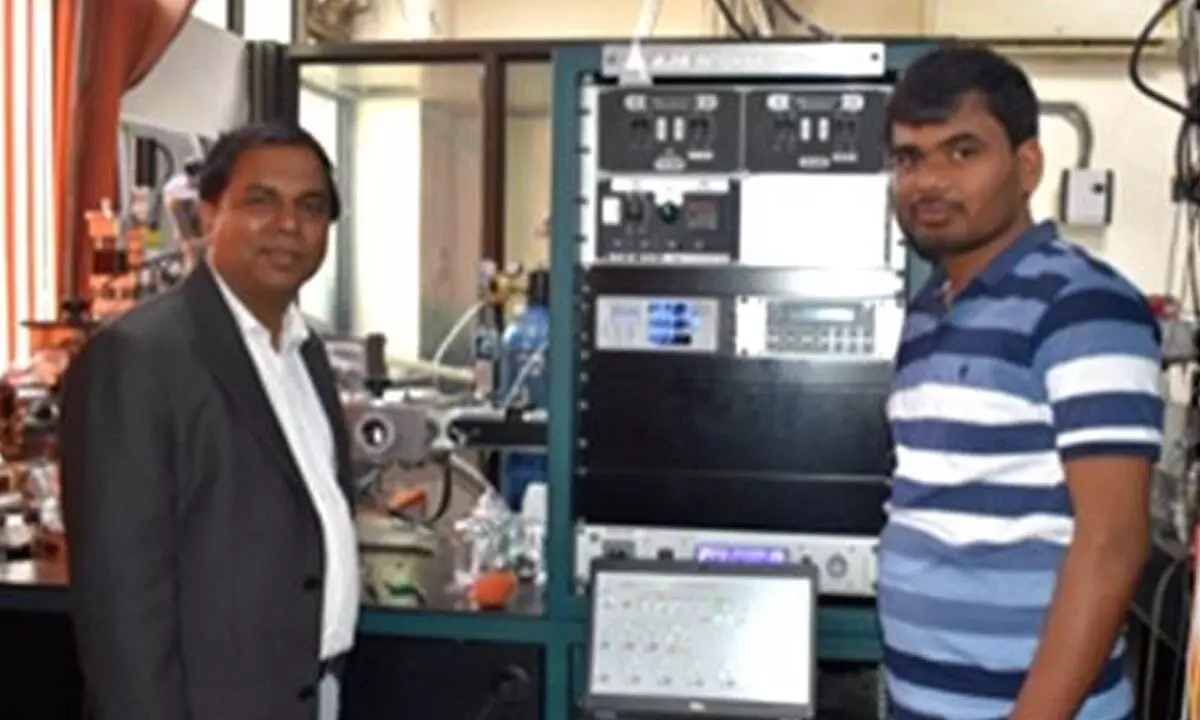Live
- PBD: Communication strategy meet held
- December 2024 Bollywood Movies: A Glimpse of Action, Romance, and More
- President Murmu’s sojourn ends
- BRS govt left huge debt burden: CM
- BJP seeks action against Rahul
- Odisha govt seeks special package for tourism sector
- US Consulate in Bengaluru by January 2nd week: BJP MP
- YSRCP activists celebrate party chief Jagan’s birthday
- Assembly adjourned sine die
- Patient with multiple injuries cured with advanced treatment
Just In
IIT researchers develop neuromorphic hardware with magnetic materials


IIT researchers develop neuromorphic hardware with magnetic materials
A team of researchers from the Indian Institutes of Technology (IIT) Delhi and Bombay built a new neuromorphic hardware using magnetic materials.
A team of researchers from the Indian Institutes of Technology (IIT) Delhi and Bombay built a new neuromorphic hardware using magnetic materials.
While interactive voice assistants like Alexa and Siri have made it very easy to obtain a response to a query or get some tasks done online, the procedure in the background is quite intricate.
It involves delivering the speech data to the cloud over the internet, processing the data in the cloud, and then providing the response to the device.
But due to slow internet speed, power outages, and other factors, speech data is frequently lost. This may change with the advent of neuromorphic computing, where local hardware with built-in memory executes all operations, hence preventing data loss while simultaneously reducing power consumption.
The new neuromorphic hardware developed using magnetic materials is capable of storing data even when the power is off. It functions similar to a synapse in the neurological system, said the research team led by Prof Pranaba Kishor Muduli at IIT Delhi and Prof. Debanjan Bhowmik at IIT Bombay.
This is the first experimental demonstration of a neuromorphic device using magnetic materials from India, according to the researchers. They detailed their device in the ACS Applied Electronic Materials journal.
"We have high hopes that the study contributes significantly to both the India Semiconductor mission as well as Make-in-India mission of the government of India," said Prof Pranaba Kishor Muduli, Department of Physics, IIT Delhi, in a statement.
The device consists of an ultrathin layer of cobalt. Thickness of the layer used is in the nano-metre range, which is 80,000-100,000 times smaller than human hair. The fabrication needs enormous precision; hence it is carried out in an ultra-high vacuum chamber containing nearly no air molecules, the team said.

© 2024 Hyderabad Media House Limited/The Hans India. All rights reserved. Powered by hocalwire.com






